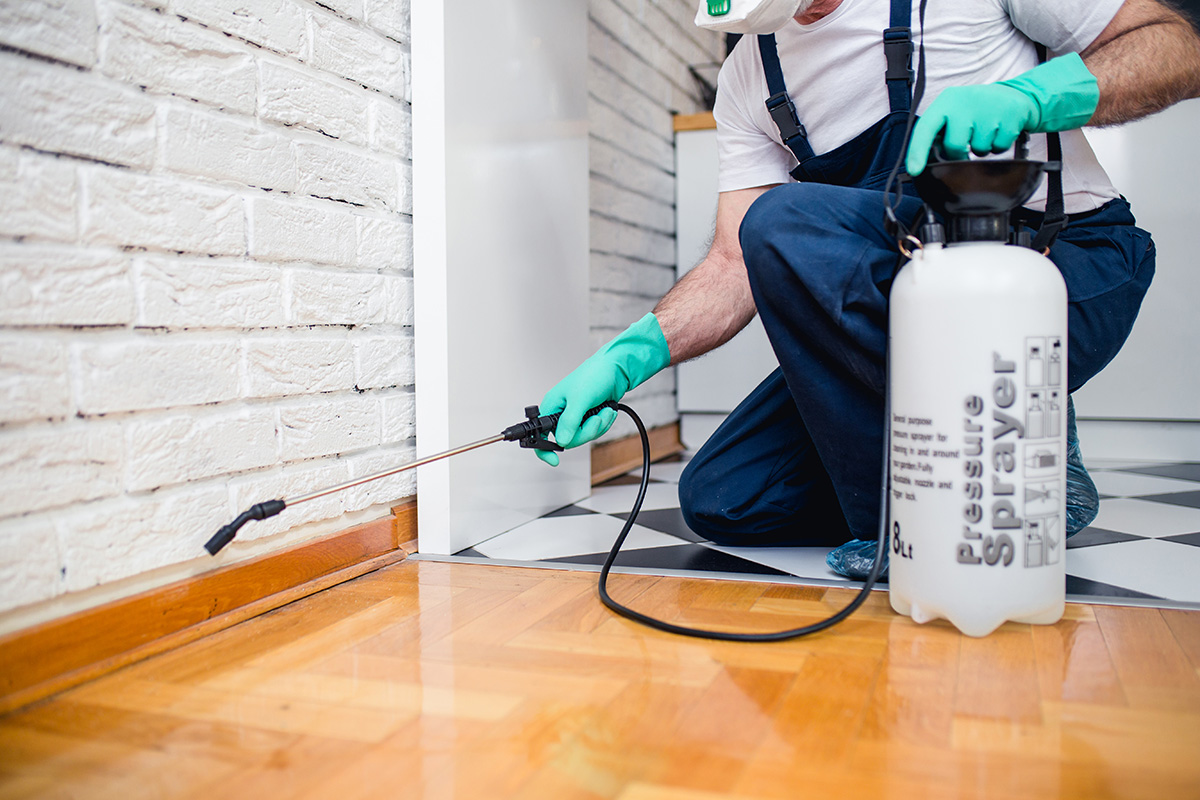A1 Bed Bug Exterminator Charlotte - Effective and Budget-friendly Services
Wiki Article
Bed Insect Therapy Malfunction: Comparing Chemical Vs. Non-Chemical Solutions
In the world of bug control, especially when managing the consistent problem of bed pests, the option in between chemical and non-chemical treatment options can be a crucial one. Both approaches use unique benefits and disadvantages, affecting elements such as performance, security considerations, and general expense. By checking out the nuanced information of each method, a clearer understanding of which path to pursue in dealing with a bed bug problem can be acquired.Performance of Chemical Treatments
Chemical treatments for bed pest invasions have been widely identified for their fast and powerful effectiveness in removing these bugs. When taking into consideration the effectiveness of chemical treatments, it is crucial to comprehend that they can supply a fast and comprehensive remedy to a bed insect trouble.In addition, chemical treatments have the benefit of providing recurring impacts, implying that they can remain to remove bed bugs also after the first application. This recurring activity is especially useful in combating any potential re-infestations. Furthermore, the fast action of chemical treatments can bring relief to people encountering severe bed insect infestations, permitting them to gain back control of their space quickly.
Safety And Security Interest In Chemical Solutions
One essential element that calls for cautious consideration when utilizing chemical services for bed insect therapy is making certain the safety and security of occupants and the atmosphere. Exposure to particular chemicals made use of in bed pest therapies can lead to respiratory system problems, skin irritation, or other negative responses, particularly in people with pre-existing conditions or level of sensitivities.Furthermore, the ecological effect of chemical options is an additional substantial factor to consider. Some pesticides used in bed insect treatments may be harmful to beneficial bugs, wildlife, and communities if they seep into the dirt or water supply. It is vital to utilize chemical treatments judiciously, following security standards, and taking into consideration less poisonous options to mitigate these risks and make certain the secure and reliable management of bed bug infestations.
Benefits of Non-Chemical Techniques
Thinking about the possible security concerns and environmental impact related to chemical options for bed bug treatment, discovering non-chemical methods offers a promising option with numerous unique benefits. Non-chemical methods supply a safer alternative for homes, especially those with people, pet dogs, or kids sensitive to rough chemicals. These techniques eliminate the dangers of exposure to hazardous substances, minimizing the capacity for unfavorable health and wellness results. Furthermore, non-chemical therapies are environmentally pleasant, as they do not add to air or water air pollution, making them a lasting selection for insect control.Additionally, non-chemical remedies can be effective in targeting bed bugs, consisting of hard-to-reach locations where chemical treatments may not penetrate. Techniques such as warm treatment, vacuuming, heavy steam cleaning, and mattress encasements give detailed eradication without using dangerous chemicals. Additionally, non-chemical approaches can be much less disruptive, requiring marginal prep work and enabling quicker reentry into treated locations. On the whole, going with non-chemical bed insect therapy approaches not only focuses on safety and security and environmental defense however likewise makes certain effective and thorough bug control.
Limitations of Non-Chemical Treatments

In addition, non-chemical treatments frequently call for numerous applications to achieve effective eradication. This can be lengthy and might not always guarantee total removal of all bed bugs and their eggs, specifically in hidden or hard-to-reach locations.
Moreover, the success of non-chemical treatments heavily discover this relies on proper application and thoroughness, which can be challenging for people without professional knowledge. Inadequate application of non-chemical techniques might lead to incomplete elimination, leading to consistent problems and the requirement for added therapies.
Therefore, while non-chemical therapies have their advantages, it is necessary to recognize these restrictions and consider them when figuring out one of the most reliable technique for handling bed insect infestations.
Expense Comparison: Chemical Vs. Non-Chemical Options
Offered the limitations related to non-chemical therapies, a crucial aspect to review in the context of bed bug administration is the cost contrast in between chemical and non-chemical choices. Chemical treatments generally entail the application of insecticides by specialists, which can range from $250 to $900 per room, depending on the intensity of the problem and the size of the area to be treated. On the other hand, non-chemical therapies like warmth therapy or heavy steam can be more expensive, with costs ranging from $1,000 to $6,000 for a whole home. While the initial price of chemical therapies might seem lower, several therapies might be called for to totally remove the problem, potentially enhancing the total cost. On the other hand, non-chemical alternatives may offer an extra sustainable and environmentally friendly solution, although they can be cost-prohibitive for some people. Ultimately, when considering the cost of bed pest therapy choices, it is necessary to weigh the ahead of time expenses versus the efficiency and long-lasting sustainability of the chosen technique.Conclusion

Taking into consideration the find more potential safety problems and environmental effect linked with chemical solutions for bed insect therapy, discovering non-chemical approaches offers an appealing choice with several distinctive advantages.Provided the limitations linked with non-chemical therapies, an important element to evaluate in the context of bed pest administration is the price contrast in between chemical and non-chemical options. In contrast, non-chemical treatments like warm treatment or vapor can be more expensive, with expenses ranging from $1,000 to $6,000 for a whole home. While the initial see here price of chemical therapies may seem reduced, several treatments may be needed to completely eliminate the problem, potentially increasing the overall cost.In verdict, when comparing chemical and non-chemical bed bug treatment alternatives, it is essential to consider performance, security, benefits, constraints, and cost.
Report this wiki page